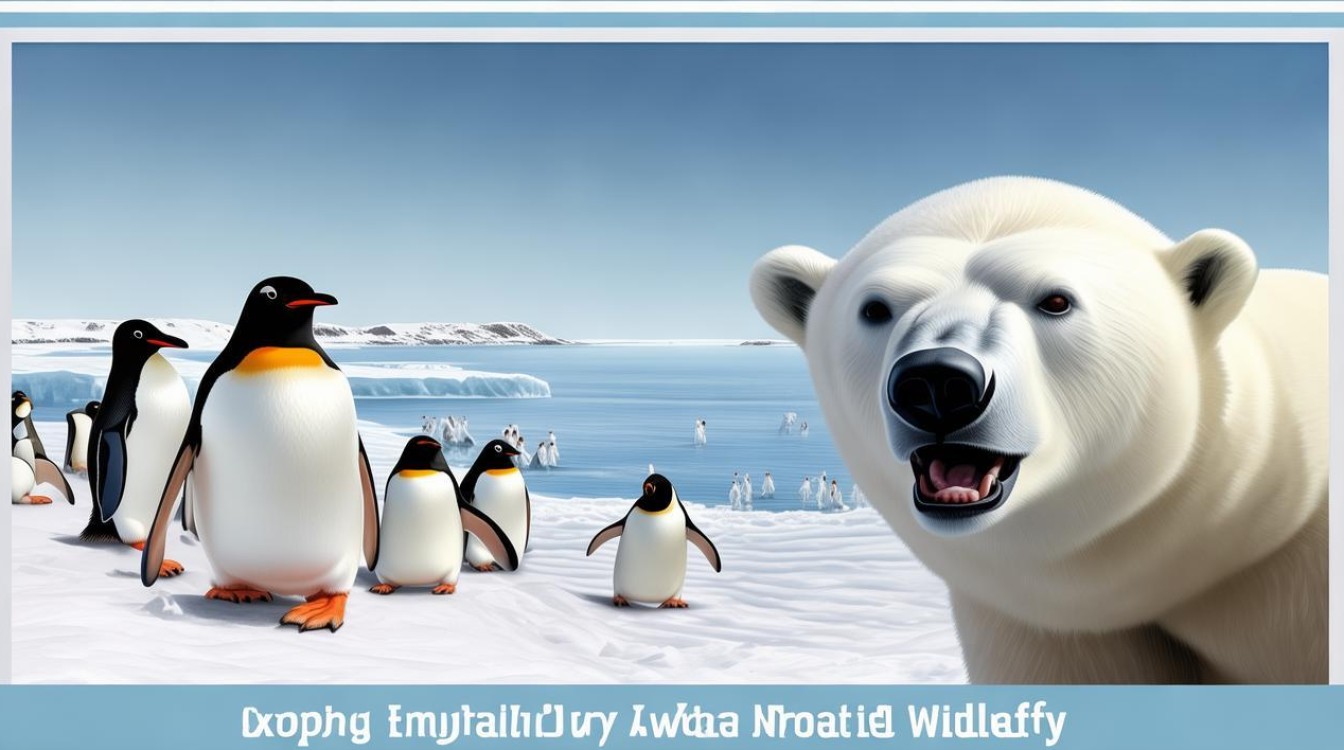The Antarctic region is home to some of the most unique and resilient creatures on Earth. From massive marine mammals to agile seabirds, the wildlife here has adapted to extreme cold and harsh conditions. For English learners, nature enthusiasts, or anyone curious about this frozen continent, expanding vocabulary related to Antarctic animals can be both educational and fascinating. Below is a detailed guide to essential terms, along with insights into these remarkable species.

Penguins: The Icons of Antarctica
Penguins are synonymous with Antarctica, though not all species live there. Here are key terms associated with them:
- Emperor Penguin (Aptenodytes forsteri) – The tallest and heaviest penguin species, known for its striking black-and-white plumage and golden-yellow neck patches.
- Adélie Penguin (Pygoscelis adeliae) – A smaller, highly social penguin with a distinctive white eye-ring.
- Chinstrap Penguin (Pygoscelis antarcticus) – Named for the thin black band under its chin.
- Gentoo Penguin (Pygoscelis papua) – Recognizable by its bright orange beak and white head markings.
- Flippers – Penguin wings, adapted for swimming rather than flying.
- Tobogganing – Sliding on their bellies across ice, a common penguin movement.
These birds rely on krill (tiny shrimp-like crustaceans) and fish as primary food sources.
Seals: Masters of the Ice and Water
Several seal species thrive in Antarctic waters, each with unique adaptations:

- Leopard Seal (Hydrurga leptonyx) – A top predator with a reptilian-like head, known for hunting penguins and other seals.
- Weddell Seal (Leptonychotes weddellii) – One of the southernmost mammals, capable of diving deep under ice.
- Crabeater Seal (Lobodon carcinophaga) – Despite its name, it primarily eats krill, not crabs.
- Southern Elephant Seal (Mirounga leonina) – The largest seal species, with males weighing up to 4,000 kg.
- Blubber – Thick fat layer that insulates seals from freezing temperatures.
- Molting – The process of shedding old fur or skin, common in seals.
Whales: Giants of the Southern Ocean
Antarctic waters host some of the most magnificent whale species:
- Blue Whale (Balaenoptera musculus) – The largest animal ever known, feeding almost exclusively on krill.
- Humpback Whale (Megaptera novaeangliae) – Famous for acrobatic breaches and complex songs.
- Minke Whale (Balaenoptera bonaerensis) – A smaller baleen whale often seen in Antarctic waters.
- Orca (Orcinus orca) – Also called killer whales, they hunt in pods and target seals, penguins, and even other whales.
- Baleen Plates – Keratin structures in some whales' mouths used to filter food from water.
- Blowhole – The nostril on top of a whale’s head used for breathing.
Seabirds: The Aerial Experts
Beyond penguins, Antarctica hosts other remarkable seabirds:
- Albatross (Diomedea spp.) – Known for having the widest wingspan of any bird, some exceeding 3.5 meters.
- Snow Petrel (Pagodroma nivea) – Pure white birds that nest on rocky cliffs.
- Antarctic Tern (Sterna vittata) – Agile fliers that migrate long distances.
- Skua (Stercorarius spp.) – Aggressive birds that steal food from others (a behavior called kleptoparasitism).
Fish and Invertebrates: The Underwater World
Beneath the ice, a diverse ecosystem thrives:

- Antarctic Toothfish (Dissostichus mawsoni) – A large, slow-growing fish often marketed as "Chilean sea bass."
- Icefish (Channichthyidae family) – Unique for having transparent blood due to lacking hemoglobin.
- Krill (Euphausia superba) – Tiny crustaceans forming the base of the Antarctic food web.
- Sea Spider (Pycnogonida) – Despite their name, these are marine arthropods, not true spiders.
Climate Change and Conservation Terms
Understanding threats to Antarctic wildlife is crucial:
- Melting Ice Shelves – Large sections of ice breaking off due to rising temperatures.
- Overfishing – Unsustainable harvesting of species like krill and toothfish.
- Marine Protected Areas (MPAs) – Designated ocean zones to conserve biodiversity.
- Microplastics – Tiny plastic particles polluting even remote Antarctic waters.
Why This Vocabulary Matters
Learning these terms enhances appreciation for Antarctica’s delicate ecosystem. Whether discussing penguin colonies, whale migrations, or conservation efforts, precise language helps convey the importance of protecting this wilderness.
For those planning to visit or study Antarctica, knowing these words fosters deeper engagement with its wildlife. Even from afar, recognizing terms like blubber, baleen, or krill swarm enriches documentaries, articles, and scientific readings.

Antarctic animals face unprecedented challenges, and spreading awareness starts with accurate, informed vocabulary. The more people understand these species, the stronger global efforts to safeguard them become.

